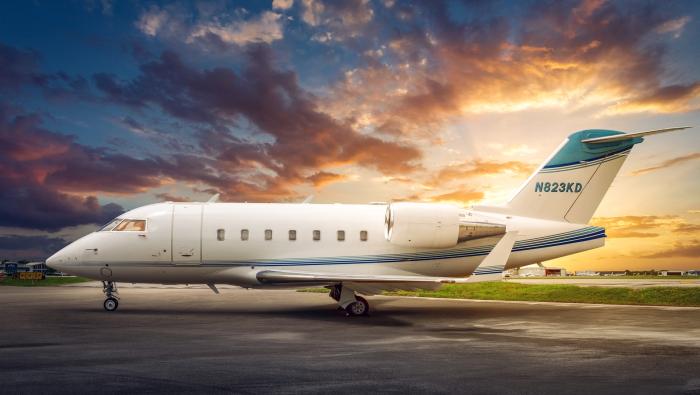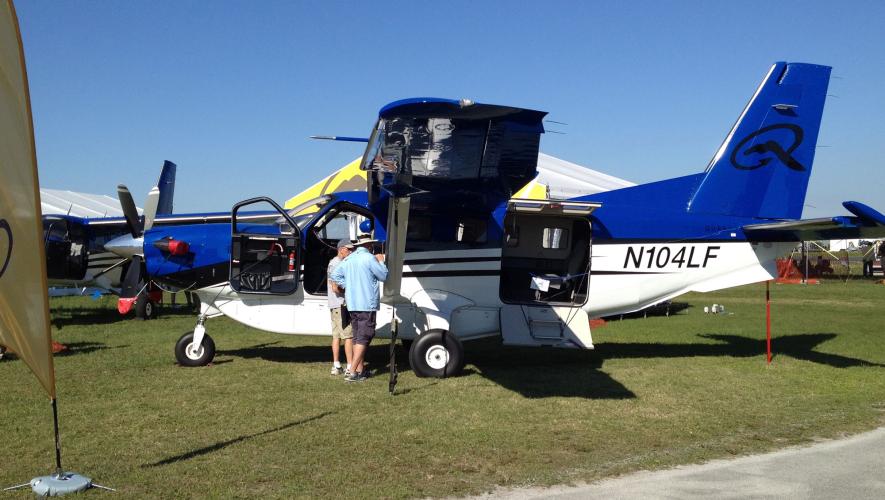With aircraft disinfection on the minds of most in the aviation industry, operators are being presented with myriad alternatives, some more suitable to the current situation than others, as more becomes known about the threat of Covid-19 and its transmission vectors.
“We are getting smarter,” said Frances Gristead, CEO of decontamination system provider Curis and founder and CEO of Pathogend Bio-Decontamination Services. Speaking this week at NBAA’s continuing webinar series on aircraft disinfection practices, she noted, “It used to be people had no idea of the difference between bleach and quaternary ammonium, and now we are seeing a much more educated buyer and user out there.”
She explained that the difference between cleaning, sanitizing, and sterilizing, is one of how many live pathogens are left on a surface after treatment, in a scientific tally known as log reduction—the higher the number-log, the fewer pathogens left behind. Operators must decide what level of disinfection (log reduction) they are looking to achieve.
It is a complicated topic to be sure, and before methods are chosen she said research is vital and should involve a good degree of skepticism, This is especially true since there are now lawsuits where plaintiffs are suing on claims they were exposed to an environment in which they contracted Covid-19. In such cases, companies might need to prove they did all they could be expected to do to protect the health of their clients.
Customers should demand to see peer-reviewed data for each product or system to ensure that the science is sound and that the product or system does what it purports to do against the pathogens you wish to combat.
“Some of these products are not regulated by the EPA and so they generate their own data, she said. “If I’m the manufacturer of XYZ product and I’m trying to sell it, I’m going to tell you how good it is, but I’m not really going to want to put it to the test, and I’m not going to tell you where it fails, and I’m not going to tell you all the tricky stuff.”
For those products that are federally-regulated, guidelines from the EPA and CDC should be followed, as well as the proper application instruction from the disinfectant maker to achieve the intended log reduction.
Nathan Winkle, founder and president of aircraft maintenance management provider Thoroughbred Aviation, said it is also crucial to see what guidance an aircraft manufacturer offers in terms of cleaning and disinfection products. “If your manufacturer doesn’t reference a detailed list of items, look at the other ones,” he said. “Aluminum is aluminum, wire is wire, there’s a lot of similarities, albeit some differences. But I think you’ll find that certain manufacturers have done a really good job of detailing that out.”
Some products might also require specific removal techniques after application, while others might leave behind residues that can even foster pathogen growth after the active ingredient has worn off. Some products can even foster other environmental issues.
Once all that is settled, Gristead said operators should be prepared to do it all over again as pathogens can develop immunities against specific disinfection products. Thus, users will need to vary their sanitizing methods to avoid developing a super-resistant colony aboard their aircraft.
“The challenge for us is its uncharted territory,” explained Greg Hamelink, Stryker Corp.’s senior manager for flight operations and maintenance. He suggested that operators remain on top of evolving information both on the equipment side as well as the medical side. “What we used maybe a month ago or two months ago, we’re now looking at what particular aircraft manufacturers and avionics manufacturers are telling us what we can and can’t use from a perspective of are we going to damage the aircraft.”
In some cases, there is a disconnect between the sanitizing product manufacturer’s recommended application and what is suggested by the OEM. “We have that conflict as aviators,” said Hamelink. “We’re trying to apply products correctly, but we’re also trying to go with the aircraft manufacturer’s recommendations so that we don’t do undue damage, so it’s a bit of a dance for us."
Gristead noted that going “off-label” could also alter the product’s dosing and efficacy. “You’ve just changed how you use that product,” she told the audience, adding these products are approved to be used in a specific way because that’s how they were tested. “So you really don’t know what you are achieving there.”
Winkle said the reason behind these webinars is to force operators to ask good questions about the choices available, learn what these products are, and to make sure they do what is required from them. “All these things work in their own right when used properly in their own way at the right level,” he explained. “A water sprinkler works great in your garden, but it’s [worthless] for fighting fires.”







